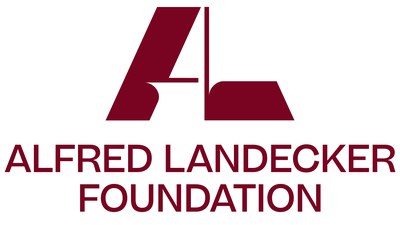Forschung
Dissertationen:
Eine Auswahl der derzeit an der Professur laufenden Dissertationsprojekte (bei Erstbetreuung) finden Sie hier.
Buchreihe: Balkanologische Veröffentlichungen
In der Buchreiche „Balkanologischen Veröffentlichungen“ erscheinen Monographien und Sammelbände zu Geschichte, Gesellschaft und Kultur im Balkanraum. Im Fokus stehen historische, kulturwissenschaftliche, ethnologische sowie sozial- und kulturanthropologische Forschungen. (mehr ...)
Buchreihe: Phantomgrenzen im östlichem Europa
Die Buchreihe "Phantomgrenzen im östlichen Europa" versammelt die Ergebnisse des in vier Teilprojekten organisierten Kompetenznetzwerk "Phantomgrenzen in Ostmitteleuropa", dieses wird seit 2011 vom BMBF im Rahmen der Förderung der Regionalstudien finanziert. (mehr ...)
Online-Zeitschrift: Südosteuropäische Hefte
Die Online-Zeitschrift "Südosteuropäische Hefte" versteht sich in allgemeiner Zielsetzung als Forum für Nachwuchswissenschaftler_innen, die zum regionalen Schwerpunkt Südosteuropa forschen. Sie will daher neuere Arbeiten und Projekte der deutschsprachigen Südosteuropaforschung abbilden und zugleich Raum für intellektuellen Austausch und kooperative Vernetzung bieten (mehr ...).
Gastwissenschaftler/-innen:
Einen Überblick über die Wissenschaftler/innen, die für einen längeren Zeitraum als Gäste am Lehrstuhl assoziiert seit dem Sommersemester 2010 geforscht haben, finden Sie hier
Drittmittelprojekte
- Prof. Dr. Hannes Grandits ist Co-Sprecher für das Projekt Reordering Yugoslavia, Rethinking Europe: A Transregional History of the Yugoslav Wars and the Post-Cold War Order (1991-1995) (2023/24-2026/27).
Das Kooperationsprojekt wird von der Leibniz-Gemeinschaft finanziert. Das Projekt bringt Historiker und Regionalexperten des Leibniz-Instituts für Zeitgeschichte (IfZ), des Leibniz-Instituts für Ost- und Südosteuropastudien (IOS) und der Humboldt-Universität zu Berlin zusammen, um zu untersuchen, wie die Jugoslawienkriege internationale Normen, Grenzen und die europäische Ordnung nach dem Kalten Krieg neu gestaltet haben. Teil davon ist das Forschungsprojekt The Rise of Assertive Peacebuildung in Bosnia-Herzegovina (1992-2002), Contestation, Learning, and Adaption in a Shifting Political Arena, unter der Leitung von Kristóf David Gosztonyi (Website).
Hintergrund
Von Anfang an wurde der Bosnienkrieg stark – wenn auch nicht ausschließlich – durch internationales Engagement geprägt. Die ersten Bemühungen waren jedoch eher halbherzig: Leicht bewaffnete Friedenstruppen wurden in eine Situation intensiver Gewalt entsandt, ohne dass Frieden zu wahren war, während humanitäre Maßnahmen oft nur das Leid lindern konnten, ohne es zu verhindern.
Im Laufe der Zeit wurde die internationale Intervention jedoch immer entschlossener. Zunächst trug der von den USA ausgeübte Druck im März 1994 dazu bei, den „Krieg im Krieg“ zwischen bosnischen Kroaten und Bosniaken zu beenden, was zum Washingtoner Abkommen führte.
Von da an verstärkte sich die Rolle der internationalen Gemeinschaft. Durch die Bewaffnung und Ausbildung der kroatischen Armee und die Einleitung einer anhaltenden NATO-Luftkampagne gegen bosnisch-serbische Stellungen spielten internationale Akteure eine entscheidende Rolle bei der Beendigung des Krieges. Diese Bemühungen gipfelten im Dayton-Friedensabkommen (DPA), das im November 1995 unterzeichnet wurde und die Feindseligkeiten offiziell beendete.
Als die Umsetzung der zivilen Bestimmungen des DPA ins Stocken geriet, erweiterte der Friedensimplementierungsrat die Befugnisse des Hohen Repräsentanten. Dazu gehörte die Befugnis, verbindliche Entscheidungen (Dekrete) zu erlassen, wenn sich die lokalen Parteien nicht einigen konnten, und Beamte, die die Umsetzung behinderten, ihres Amtes zu entheben. Anfangs stießen diese zunehmend eingreifenden Maßnahmen auf massiven Widerstand – insbesondere von nationalistischen Akteuren, die das einheitliche Dayton-Rahmenwerk untergraben wollten, so schwach es auch gewesen sein mag. Bis 2002 wurden diese außerordentlichen Befugnisse jedoch regelmäßig genutzt – und, was entscheidend ist, weitgehend respektiert –, obwohl das Büro des Hohen Vertreters keine direkte Exekutivgewalt hatte.



Forschungsziele
Dieses Forschungsprojekt untersucht den allmählichen Anstieg der Durchsetzungskraft der internationalen Intervention in Bosnien-Herzegowina als Ergebnis komplexer Interaktionen innerhalb einer umkämpften und sich wandelnden politischen Arena. Es befasst sich mit den folgenden miteinander verbundenen Fragen und analytischen Rätseln:
- Warum wurde die internationale Intervention nur allmählich und zögerlich durchsetzungsfähig?
- Wie haben lokale bosnische Akteure den wachsenden internationalen Druck bewertet, verhandelt und sich daran angepasst – sei es durch Widerstand, Nachgeben, Zusammenarbeit oder Manipulation?
- Inwiefern haben diese lokalen und internationalen Interaktionen sowohl die sich entwickelnde Natur der Intervention als auch die politische Struktur des Nachkriegsbosnien-Herzegowinas geprägt?
Durch die Untersuchung dieser Fragen möchte das Projekt Aufschluss über die langfristigen Auswirkungen der internationalen Intervention, die Prozesse des institutionellen Lernens und die umstrittene Entstehung der politischen Ordnung geben, die Bosnien-Herzegowina nach 1992 prägt.
Der Umfang der Forschung
Angesichts des Interesses des Projekts am institutionellen Lernen sowohl auf höherer als auch auf niedrigerer Ebene der intervenierenden internationalen Organisationen (IOs) wird die Forschung zwei miteinander verbundene Ebenen untersuchen:
- Die Ebene der Hauptquartiere, einschließlich der Missionen in Sarajevo und der Strukturen in Bosnien und Herzegowina/der gesamten Föderation; und
- Die Ebene vor Ort, wo sich die Dynamik der Umsetzung und die Anpassungen oft erheblich unterschieden.
Die primäre Fallstudie auf Feldebene konzentriert sich auf Südbosnien-Herzegowina, insbesondere auf die Stadt Mostar, wo ich im August 1995 mit der Feldforschung für meine Dissertation begann. Anschließend arbeitete ich dort zeitweise für internationale Organisationen – zunächst 1996 für die Europäische Union Administration of Mostar (EUAM) und später zwischen 1997 und 2002 für das Office of the High Representative (OHR).
Diese Region war ein Brennpunkt des Konflikts zwischen Bosniaken und bosnischen Kroaten, wobei letztere die Gründung der separatistischen Entität Herceg-Bosna entlang des südwestlichen Korridors von Herzegowina an der Grenze zu Kroatien anstrebten. Damit ist das Gebiet ein kritischer Ort im Nachkriegskonflikt um die Einheit von Bosnien-Herzegowina – und damit ein besonders aufschlussreicher Fall für die Analyse, wie sich die internationale Durchsetzungskraft und die lokalen Reaktionen im Laufe der Zeit entwickelt haben.
-
Dr. Marija Vulesica gehört der ersten Kohorte der von der Alfred Landecker Foundation geförderten Lecturer an.
“We call it personality, but it´s actually a multi-layered figure. Hinko Gottlieb, Aleksandar Licht, Lavoslav Schick, Aleksa Klein. A Jewish-Croatian Collective Biography.”
Dr. Marija Vulesica widmet sich in diesem Projekt der kollektiv-biografischen Erforschung des Holocaust, seiner Vor-und Nachgeschichte im Unabhängigen Staat Kroatien.
Mehr Informationen zum Projekt finden Sie hier.
Hier finden Sie eine Liste der abgeschlossenen Drittmittelprojekte an der Professur für Südosteuropäische Geschichte.


